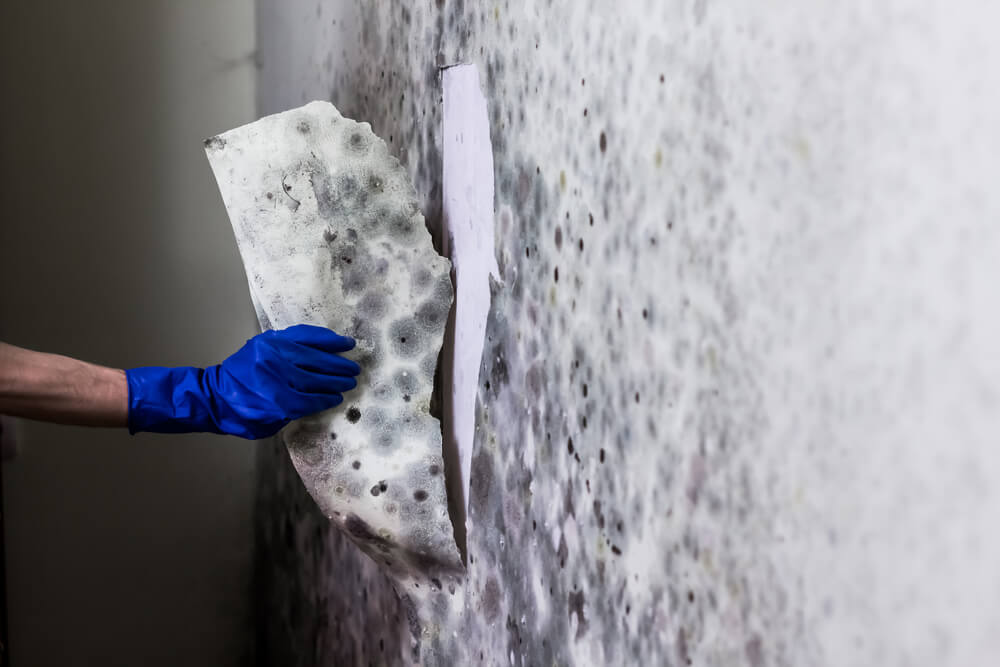Comprehensive Post Mold Remediation Procedures
Comprehensive Post Mold Remediation Procedures
Blog Article
Professional Tips for Blog Post Mold Remediation Success
In the realm of mold removal, successfully removing mold is only half the fight; the real challenge exists in preventing its reappearance. By adhering to experienced pointers and best techniques, individuals can secure their areas against mold and mildew revival and keep a healthy interior environment.
Screen Moisture Degrees Consistently
Regular monitoring of moisture levels is essential in ensuring the performance of article mold and mildew removal initiatives. After completing mold and mildew remediation treatments, keeping optimal humidity levels is important to avoid mold re-growth and guarantee a healthy indoor environment. Tracking moisture degrees permits for early detection of any kind of spikes or changes that could potentially lead to mold renewal. High humidity degrees over 60% create a helpful atmosphere for mold to grow, making normal keeping track of an aggressive action to stop any future mold issues - Post Remediation verification.
Making use of hygrometers or dampness meters can aid in properly measuring moisture levels in various locations of the home. These tools supply real-time information that allows remediation specialists to make informed decisions concerning ventilation, dehumidification, and other essential actions to keep ideal moisture degrees post-remediation. Additionally, establishing a regular timetable for humidity checks, especially in risky areas such as kitchens, bathrooms, and cellars, is a proactive technique to mold avoidance. By constantly keeping track of humidity degrees, residential property proprietors can properly minimize the risk of mold and mildew reoccurrence and preserve a healthy and balanced indoor environment post-remediation.
Conduct Thorough Inspections Post-Remediation
Following the conclusion of mold and mildew remediation procedures, it is necessary to perform thorough evaluations to validate the performance of the removal procedure. These post-remediation evaluations are vital in making certain that the mold concern has been efficiently attended to which there is no reappearance or continuing to be mold and mildew growth. Examinations must be executed by qualified experts that have experience in determining mold and mildew and assessing indoor air high quality.
Throughout these evaluations, numerous approaches such as visual analyses, air tasting, and surface sampling may be employed to thoroughly assess the remediated locations. Visual analyses entail a detailed inspection of the facilities to examine for any noticeable indicators of mold and mildew development or water damage. Air sampling aids in figuring out the airborne mold and mildew spore degrees, while surface area tasting can find mold and mildew particles on surfaces.
Implement Proper Ventilation Techniques
After making certain the effectiveness of the mold and mildew removal procedure via complete examinations, the following important step is to concentrate on carrying out appropriate air flow strategies. Sufficient air flow is vital in stopping mold reoccurrence by managing dampness degrees and advertising air flow.
Appropriate ventilation not just aids in stopping mold and mildew growth yet likewise contributes to the overall wellness and convenience of residents. By making certain appropriate air flow throughout the building, you can reduce the threat of mold regrowth and create a healthier living setting.

Use Mold-Resistant Products for Repairs
To boost the lasting effectiveness of mold remediation initiatives, incorporating mold-resistant try these out materials for fixings is essential in mitigating the risk of future mold growth. Mold-resistant products are made to endure dampness and inhibit mold growth, making them a vital option for locations susceptible to dampness and humidity. When fixing areas impacted by mold and mildew, making use of products such as mold-resistant drywall, mold-resistant paints, and mold-resistant caulking can aid protect against mold and mildew recurrence.
Mold-resistant drywall is an excellent alternative to conventional drywall in locations like bathrooms and cellars where wetness degrees are greater. When subjected to damp conditions, this type of drywall has a special finish that withstands mold and mildew growth even. Furthermore, making use of mold-resistant paints consisting of antimicrobial representatives can better inhibit mold and mildew advancement on ceilings and walls.
In areas where wetness is common, such as restrooms and cooking areas, utilizing mold-resistant caulking around sinks, tubs, and home windows can aid seal out water and protect against mold and mildew from holding in cracks and gaps. By buying these mold-resistant materials during repairs post-remediation, you can address substantially lower the chance of future mold and mildew problems and maintain a much healthier indoor setting.
Maintain Sanitation and Address Water Issues
After mold removal, it is vital to preserve a clean setting to protect against the regrowth of mold and mildew. Leakages, water invasion, or high humidity degrees can create the best reproduction ground for mold, so it is critical to take care of any type of water-related troubles instantly.
To preserve tidiness, take into consideration utilizing HEPA filters in vacuums and air cleansers to catch mold and mildew spores and prevent their flow in the air. Guaranteeing appropriate air flow in areas vulnerable to moisture buildup, such as shower rooms and kitchens, can assist keep moisture levels in check. By staying attentive regarding tidiness and resolving water problems without delay, you can properly stop mold and mildew reinfestation and preserve a healthy indoor setting.
Conclusion

In the world of mold remediation, efficiently removing mold is only half the fight; the real difficulty lies in avoiding its reappearance. After finishing mold removal procedures, keeping ideal humidity levels is vital to stop mold and mildew re-growth and make sure a healthy and balanced indoor atmosphere. High humidity levels over 60% create a favorable setting for mold to grow, making regular checking a proactive procedure to prevent any type of future mold find out here now problems.
To improve the long-term efficiency of mold and mildew removal efforts, integrating mold-resistant materials for fixings is vital in reducing the threat of future mold and mildew development. After mold remediation, it is important to preserve a clean environment to prevent the regrowth of mold and mildew.
Report this page